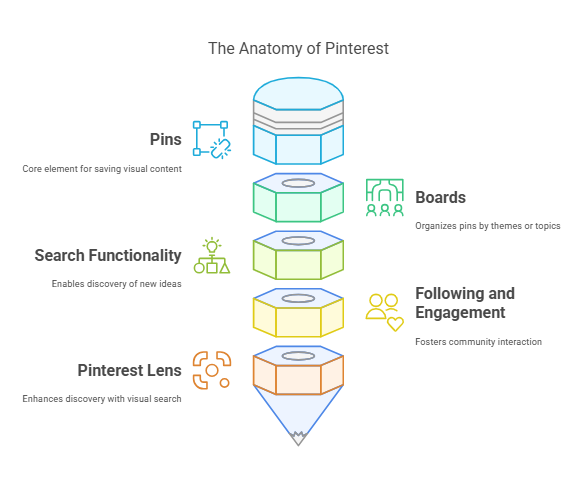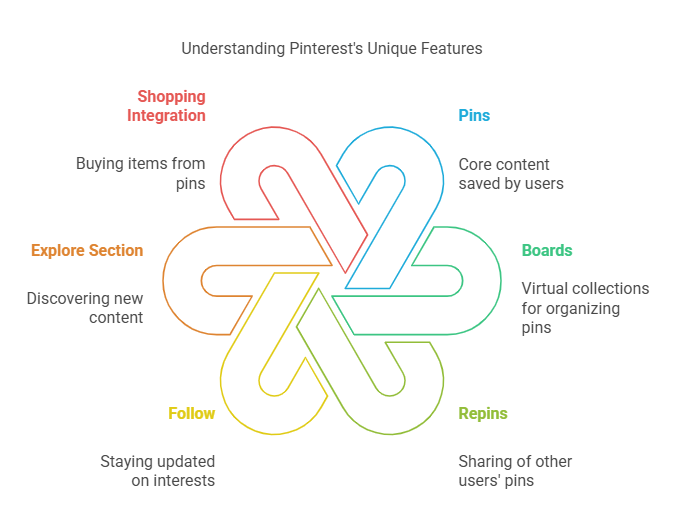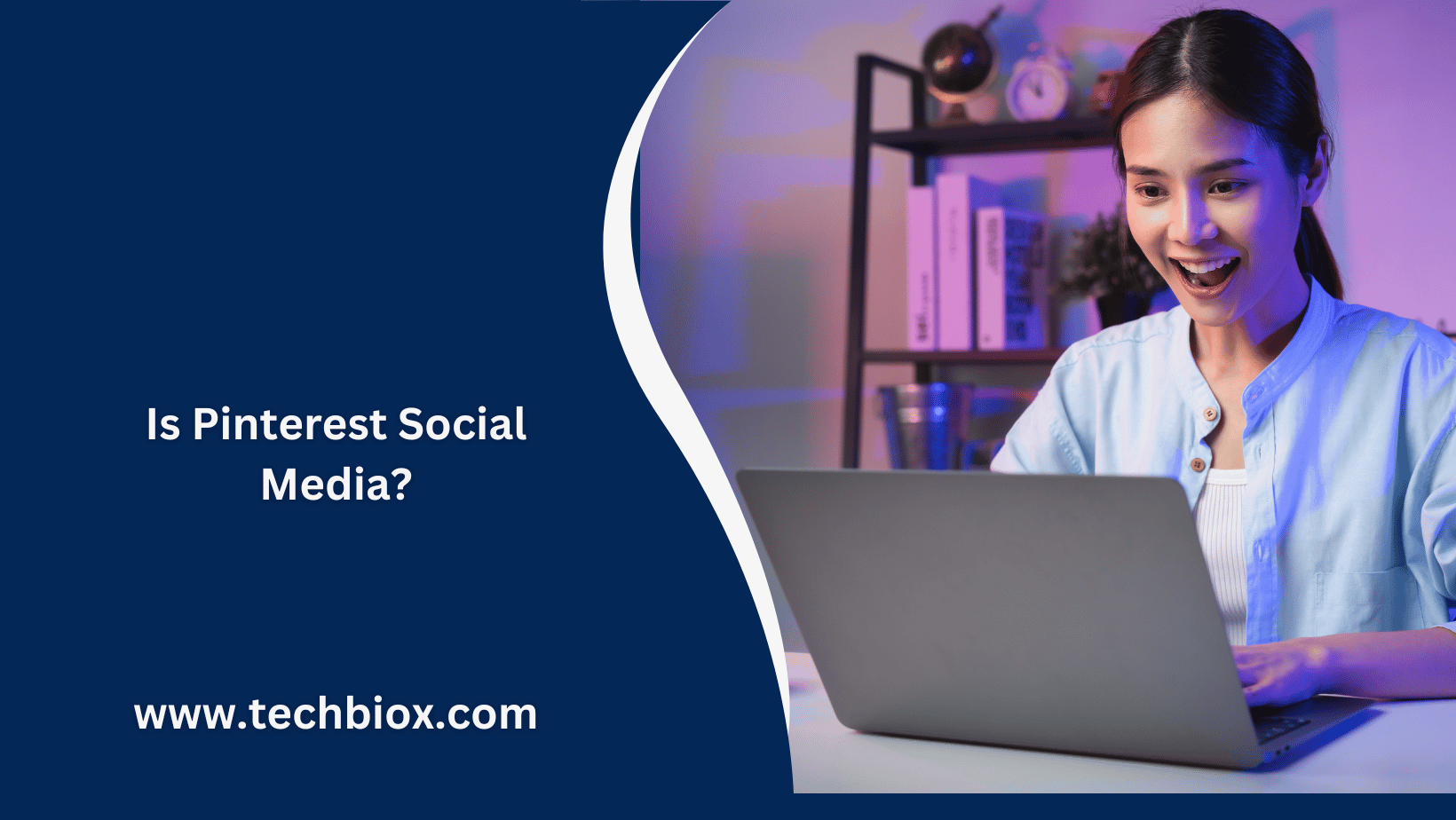Is Pinterest social media
Discover whether Pinterest is a social media platform or something different. Explore its unique features, the way users interact, and how it compares to other social networks.
Introduction of is Pinterest social media
In the ever-evolving digital landscape, platforms like Facebook, Twitter, Instagram, and TikTok have long been regarded as the giants of social media. But what about Pinterest? Is it a social media platform, or does it occupy a different niche within the online ecosystem? For years, people have used Pinterest to find inspiration, save ideas, and share their creativity, but the distinction between it and traditional social media platforms isn’t always clear.
In this article, we will delve into Pinterest’s unique features, its similarities and differences compared to other social media networks, and whether or not it should be classified as social media. We will also explore how users interact with the platform and how it has evolved over time.
What is Pinterest?
Launched in 2010 by Ben Silbermann, Paul Sciarra, and Evan Sharp, Pinterest was initially conceived as a virtual pinboard where users could save and share images they found interesting, inspiring, or useful. Over time, the platform evolved, and its capabilities expanded to include the ability to pin not only images but also videos, infographics, and other content types.
Unlike traditional social media platforms, Pinterest is less about real-time interactions, comments, and posts. Instead, it focuses on helping users organize content they like into boards for easy access and sharing. With over 450 million monthly active users as of 2023, Pinterest has become a significant force in the digital space, especially in areas like DIY, fashion, food, travel, and home decor.

Key Features of Pinterest
Before determining whether Pinterest is social media, it’s important to understand the features that set it apart from other platforms. Some of the key features include:
- Pins: Pins are the core content on Pinterest. They are images or videos that users save to their boards. When users find something they like (an article, a recipe, a piece of art, etc.), they can pin it to their profile for later reference or sharing.
- Boards: Boards are virtual collections where users organize their pins. For example, you might have a board for recipes, a board for fashion inspiration, or a board for home renovation ideas.
- Repins: This feature allows users to share other people’s pins onto their own boards. Repinning is a way to share content, and it creates a ripple effect of ideas that spreads across the platform.
- Follow: Users can follow specific accounts, boards, or topics. This allows them to stay updated on new pins related to their interests.
- Explore Section: Pinterest’s Explore section helps users discover new content based on their interests, trending topics, and personalized recommendations.
- Shopping Integration: Pinterest also integrates shopping features that allow users to buy items directly from pins, making it a useful platform for e-commerce.
- Visual Search: Pinterest’s visual search tool lets users find similar items or products by simply clicking on a part of an image, making it an intuitive tool for users looking for similar inspiration.

Read More About : Jira automation for rank setting: streamlining task prioritization
Social Media vs. Pinterest
Now that we’ve covered Pinterest’s features, let’s compare it to traditional social media platforms to understand whether it belongs in the same category.
1. Interaction and Communication
One of the key aspects of social media is communication—whether it’s through direct messaging, comments, or likes. Platforms like Facebook, Instagram, and Twitter focus on real-time interaction between users. People can comment on each other’s posts, reply to messages, and engage in conversations. In contrast, Pinterest is primarily focused on visual discovery, with minimal emphasis on direct communication.
On Pinterest, users interact with content by pinning or repinning it, but conversations and discussions are limited. While some comments may appear on pins, they’re not the focal point of the platform. Pinterest is more about discovering and organizing content than engaging in active discussions.
2. User-Generated Content
Another hallmark of social media platforms is user-generated content. Social media users post status updates, photos, and videos for others to engage with. On Pinterest, users create boards and pin content from a variety of sources, but the content itself is often not created by the users. Instead, users curate and collect content from around the web.
In this sense, Pinterest operates more like a visual search engine or content aggregator, allowing users to find inspiration without necessarily contributing original content. While it does have an option for creating original pins, the majority of activity on Pinterest involves sharing content created by others.
3. Content Consumption
Traditional social media platforms are designed to facilitate content consumption and engagement in real-time. Users scroll through newsfeeds or timelines to see updates from people they follow. Pinterest, on the other hand, serves more as a visual discovery tool where users browse through various categories or topics to find images, articles, and products they find interesting or inspiring.
Users don’t interact with other users in the same way they would on Facebook or Twitter. Instead, they engage with content by pinning it, and it’s all about curating collections of content for personal use or sharing with others.
4. Monetization and Business Models
Social media platforms primarily monetize through advertising and sponsored posts, while Pinterest’s monetization strategy also includes advertising but has a unique twist. The platform allows businesses to create “Promoted Pins,” which appear within users’ feeds as they browse. Pinterest also integrates e-commerce by allowing users to purchase items directly from pins.
However, Pinterest doesn’t have the same level of personalized, targeted content found on Facebook or Instagram, where ads are tailored based on extensive user data. Pinterest is often seen as a search engine for visual inspiration, and the way users interact with the content is a bit different, making it a less intrusive experience for advertisers.
5. Purpose and Focus
The most significant difference between Pinterest and traditional social media lies in their purpose. Social media platforms are designed for people to stay connected and share updates with friends, family, and followers. Pinterest, in contrast, is a platform for discovering, curating, and organizing content that users find interesting. It focuses more on content exploration rather than user interaction and social networking.
Pinterest’s Unique Position
While Pinterest shares some characteristics with social media, such as user accounts, following features, and the ability to share content, it differs in its core mission and the way users interact with it. Pinterest is a blend of social media and a visual search engine. It serves as a tool for discovering new ideas, saving them for future reference, and sharing them in a more passive, non-interactive way.
Pinterest is also a platform for inspiration, providing a visual medium for users to explore new products, services, and concepts. It doesn’t focus on socializing or fostering conversations, but rather on discovering and organizing content.
FAQS
1. Is Pinterest considered a social media platform?
Pinterest shares some characteristics with traditional social media platforms, such as user accounts and the ability to share content. However, its main focus is on visual discovery and curation rather than real-time interaction and communication. It operates more like a visual search engine and inspiration board, blending aspects of both social media and content discovery.
2. How do users interact on Pinterest?
Users interact on Pinterest by pinning, repinning, and organizing content into boards. While there is a minimal level of communication, such as comments on pins, Pinterest is primarily a platform for discovering and saving content rather than engaging in real-time discussions like on other social media platforms.
3. Can businesses use Pinterest for marketing?
Yes, Pinterest offers businesses unique marketing opportunities through promoted pins and shopping integration. Companies can create visually appealing content that appears in users’ feeds, and users can purchase products directly from pins. This makes Pinterest an effective tool for e-commerce and brand promotion.
4. What is the difference between Pinterest and Instagram?
While both Pinterest and Instagram focus on visual content, Pinterest is primarily a platform for discovering and organizing ideas and inspiration, whereas Instagram centers on social networking and real-time engagement. Instagram emphasizes posting personal updates and interacting with others, while Pinterest is more about content curation and inspiration.
5. How do I get more followers on Pinterest?
To gain more followers on Pinterest, focus on creating high-quality, visually appealing pins that resonate with your target audience. Consistently pin content that aligns with popular trends, optimize your boards with relevant keywords, and engage with others by repinning and commenting on content. Collaborating with other users and promoting your Pinterest profile on other social media channels can also help attract followers.
Conclusion
So, is Pinterest social media? The answer is somewhat subjective. While it shares some features with traditional social media platforms, Pinterest’s primary focus is on visual discovery and curation rather than interaction and communication. It’s a unique platform that combines elements of social networking, search, and inspiration, making it difficult to classify into a single category.
For users looking for inspiration, ideas, or even shopping options, Pinterest remains an essential tool. Its ability to curate content from around the web and organize it into personal collections sets it apart from other social media platforms, and its role in the digital space is significant.

